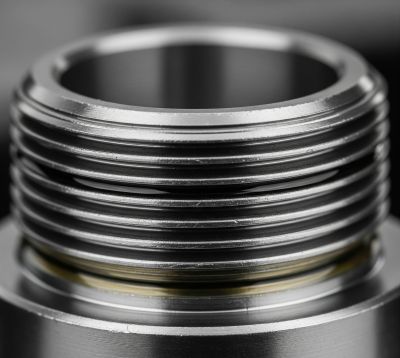In the world of industrial components, plumbing systems, and pneumatic or hydraulic fittings, the compatibility of threads is critical. Threaded connectors are everywhere—joining pipes, securing valves, and enabling leak-free seals in countless applications. But not all threads are created equal.
Understanding thread standards such as G1, BSP, and metric threads is essential to prevent leaks, cross-threading, or even component failure. One of the most common areas of confusion lies in distinguishing G1 threads from similar-sounding thread types like metric or NPT.
In this blog post, we’ll clarify what a G1 thread really is, how it compares to other thread types, and why identifying it correctly matters for system integrity.
What Is a G1 Thread?
The G1 thread refers to a 1-inch BSPP (British Standard Pipe Parallel) thread. The “G” designation follows ISO 228-1, which specifies the dimensions and tolerances of pipe threads where pressure-tight joints are not made on the threads themselves (parallel threads).
What is the G1 Thread Size?
➡️ Nominal Size: 1 inch
➡️ Thread Type: BSPP (parallel)
➡️ Threads Per Inch (TPI): 11
➡️ Thread Angle: 55°
These threads are not tapered, meaning the male and female components are the same diameter along their length. Instead of relying on the thread to form a seal (as in NPT or BSPT), BSPP threads use an O-ring or sealing washer at the mating surface.
Where Are G1 Threads Used?
G1 threads are common in:
➡️ Plumbing fixtures and valves
➡️ Pneumatic and hydraulic systems
➡️ Water filtration and treatment systems
➡️ Industrial automation equipment
Overview of BSP Threads
Is G1 the Same as BSP?
Yes and no. The G1 thread is part of the BSP family, specifically BSPP. BSP (British Standard Pipe) has two main types:
Types of BSP Threads:
➡️ BSPP (G threads): Parallel threads (e.g., G1, G1/2, G3/4)
➡️ BSPT (R threads): Tapered threads (e.g., R1, R1/2)
Both types have a 55° thread angle, a characteristic feature of BSP threads.
Where Are BSP Threads Common?
BSP threads are widely used across the UK, Europe, Asia, and Australia. They are standard in many industries outside North America, where NPT (National Pipe Thread) is more common.
What About Metric Threads?
Metric threads differ from BSP threads in several key ways:
➡️ Measurement: Metric threads are measured in millimeters, not inches.
➡️ Standardization: Governed by ISO standards (such as ISO 262 and ISO 965).
➡️ Thread Angle: 60°, not 55°.
➡️ Applications: Often used in machinery, automotive, and aerospace industries.
Common Confusion: Metric vs. G Threads
Because metric threads may appear similar in diameter to BSP threads, they are often confused—especially when components come from various international suppliers. However, their thread angles, pitch, and sealing mechanisms are different and not interchangeable.
G1 Thread vs. Metric Threads
To help you understand the differences, below is a side-by-side comparison:
|
Feature |
G1 (BSPP) Thread |
Metric Thread |
|
Measurement |
Inch-based (1″) |
Millimeter-based |
|
Thread Angle |
55° |
60° |
|
Sealing Mechanism |
Sealing washer or O-ring |
Metal-to-metal or O-ring |
|
Application |
Plumbing, pneumatics |
General machinery |
How to Identify a G1 Thread
Correct identification is crucial when sourcing replacement parts or designing systems. Here’s how to recognize a G1 thread:
Tools You’ll Need:
➡️ Thread pitch gauge
➡️ Caliper (for measuring outer diameter)
➡️ Thread gauge or comparison chart
Characteristics of G1 (BSPP) Threads:
➡️ Parallel thread profile (not tapered)
➡️ Outer diameter: 33.25 mm (approx. 1 inch)
➡️ 11 threads per inch (TPI)
➡️ 55° thread angle
What Is the Difference Between NPT and G1?
NPT (National Pipe Tapered) threads, common in North America, differ from G1 threads in several ways:
➡️ Tapered vs. Parallel: NPT threads taper, creating a seal as they tighten. G1 threads are parallel and require a sealing washer.
➡️ Thread Angle: NPT uses a 60° angle vs. G1’s 55°.
➡️ Sealing Mechanism: NPT relies on thread deformation; G1 uses face sealing.
➡️ Important: G1 and NPT threads are not compatible without adapters.
Why It Matters
Selecting the wrong thread type can result in:
➡️ Cross-threading: Damaging both male and female parts
➡️ Leaks: Especially dangerous in high-pressure or critical systems
➡️ Non-compliance: Violating industry or safety regulations
Correct thread identification improves efficiency, safety, and long-term reliability.
Common Applications of G1 Threads
G1 threads appear across a wide range of systems and industries:
➡️ Industrial piping systems
➡️ Hydraulic connectors and valves
➡️ Water filtration and irrigation
➡️ Compressed air (pneumatic) systems
➡️ Marine and food processing equipment
Tips for Choosing the Right Thread Type
1. Check Manufacturer Specifications: Always confirm the required thread type before ordering or installing components.
2. Assess Pressure & Sealing Needs: Parallel threads need gaskets; tapered threads may not.
3. Use Adapters When Needed: If working with mixed standards (e.g., BSP + NPT), use approved conversion fittings to ensure a proper seal.
Conclusion
The G1 thread, a standard BSPP thread, plays a critical role in plumbing, pneumatic, and hydraulic systems worldwide. While often confused with metric and NPT threads, it has its own unique characteristics—including a 1” parallel design, 11 TPI, and 55° angle.
Understanding the differences between G1, BSP, metric, and NPT threads helps avoid costly errors and ensures your system remains safe and leak-free.
Need help identifying threads? Consult a specialist or refer to a detailed sizing chart to make the right choice every time.
Post time: Aug-20-2025


